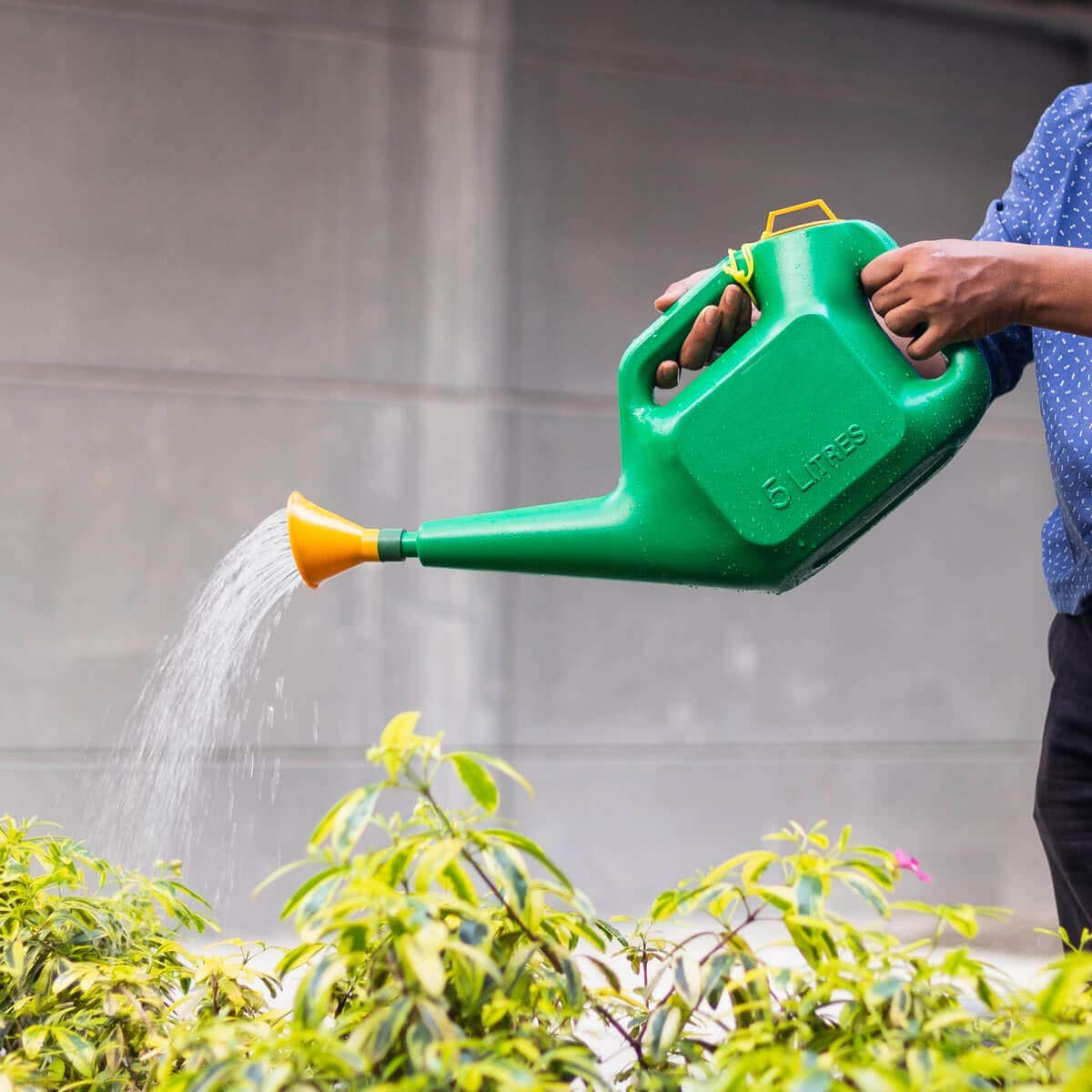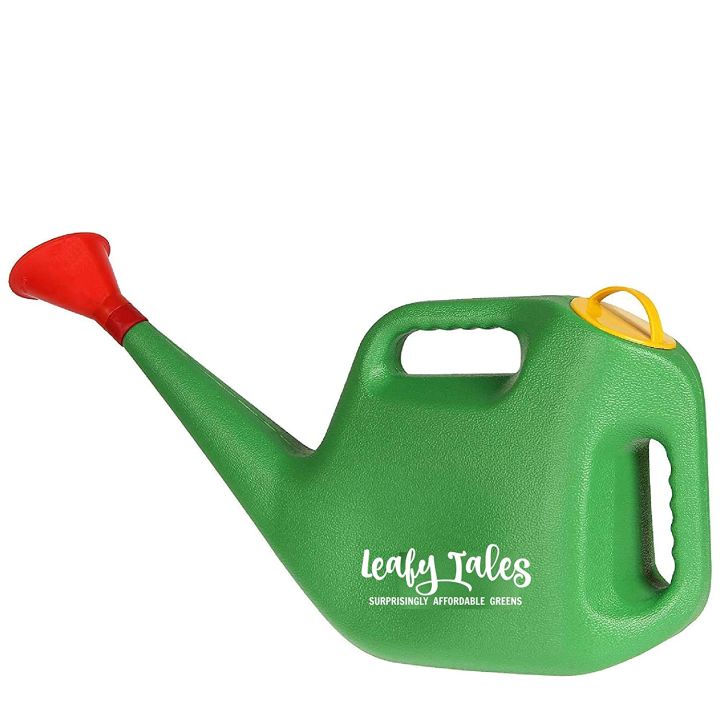The Importance of Proper Watering for Plant Health
Water matters much for plant health. Water carries nutrients from soil to plant cells, aiding growth. Over-watering and under-watering can harm plants. The right watering can for plants helps avoid these issues. It lets you control water flow and volume. This ensures plants get enough water without waste. Good watering prevents root rot and soil erosion. It also stops salt buildup in the soil. Proper watering supports photosynthesis and plant respiration too. For healthy plants, choose the right watering can and use it well.
Different Types of Watering Cans
When choosing a watering can for plants, gardeners have several options. Each type has unique features suitable for specific gardening tasks. Here are the main types to consider:
Plastic Watering Cans
Plastic cans are lightweight and affordable. They come in various shapes and sizes. These cans resist rust and are easy to clean. They work well for indoor plants and small gardens.
Metal Watering Cans
Metal cans are sturdy and last long. They usually have a traditional look, appealing for some gardeners. These are ideal for outdoor gardens but can be heavier.
Galvanized Watering Cans
Galvanized cans have a metal body with a protective zinc coating. This prevents rust, making them a durable option for many climates.
Decorative Watering Cans
These are designed to look good while being functional. They are perfect for those who want style along with performance for their gardening chores.
Collapsible Watering Cans
For easy storage, collapsible cans are great. They are perfect for gardeners with limited space. These cans expand for use and collapse after.
Self-Watering Cans
These have built-in systems that release water slowly. They are an excellent choice for consistent watering without daily attention.
Each type of watering can serves a distinct purpose. When selecting one, consider the size of your garden and your specific watering requirements. The right watering can make all the difference in keeping your plants healthy and thriving.
Key Features to Look for in a Watering Can Design
When shopping for a watering can for plants, thoughtful features can make garden work easier. Consider these key aspects to find the best can for your garden:
- Spout Length and Design: A long spout reaches plants easily, reducing strain. A removable rose attachment helps control water flow, allowing for a gentle shower that won’t disrupt the soil or harm delicate plants.
- Handle Comfort: Look for cans with an ergonomic handle. A comfortable grip reduces hand fatigue during extended use. This is especially important for gardeners who tend to large areas or water frequently.
- Balance and Control: A good design offers balance when full or empty. Cans should be easy to tilt, ensuring precise watering without unnecessary spillage.
- Volume Markings: Some watering cans have visible volume markings. These help you measure how much water you’re giving your plants, promoting consistency in watering routines.
- Material Quality: Check for high-quality materials that withstand the elements. Durability is key, whether it’s a rust-resistant metal or a UV-protected plastic.
- Lid Closure: A secure lid prevents spills and keeps water clean. Some designs come with a lid to avoid contamination from leaves and insects.
When these features are present, a watering can becomes more than just a container—it’s a tool that enhances gardening efficiency and plant health. Keep these points in mind to select a can that meets your needs, and ensures your plants flourish. Remember, a well-designed watering can is an investment in your garden’s future.
Ergonomic Watering Can Designs for Comfortable Use
When it comes to extended gardening sessions, comfort is key. A watering can with an ergonomic design can drastically reduce the strain on your hands and back. The factors listed below contribute to an ergonomic watering can design that ensures comfortable and efficient use:
- Handle Position and Shape: Seek watering cans with handles that are positioned for natural arm alignment. Handles with curves fit better in the hand and make pouring more comfortable.
- Weight Distribution: An optimally designed watering can distributes weight evenly. This feature minimizes wrist strain as you tilt the can to water plants.
- Adjustable Straps: Some modern watering cans come with adjustable straps. They allow you to support the weight with your shoulder, easing hand stress.
- Hand Clearance: Look for a can with ample space between the handle and the body. Adequate clearance avoids knocking your knuckles against the can, which can be painful.
Ergonomic watering cans combine functionality with comfort. They cater to gardeners who spend long hours caring for their plants. In selecting an ergonomic watering can for plants, ease of use becomes as important as the can’s watering capabilities. By choosing a can with these design considerations, gardeners can enjoy a more pleasant and less physically demanding gardening experience.
Innovative Watering Can Features for Enhanced Efficiency
Innovation in watering cans brings efficiency to gardening. Here are cutting-edge features that boost performance:
- Built-In Measuring Scales: Some cans have scales to measure water precisely. This helps give each plant the right amount.
- Dual Handles: Offers better control during pouring. One handle is for carrying, the other for tilting.
- Detachable Spouts: Allow for easy cleaning and the choice of different pouring speeds.
- Push-Button Flow Control: This modern feature lets you start and stop water with a button press.
- Water Level Indicator: Some cans show water levels without opening the lid. This is handy for quick checks.
- Integrated Fertilizer Mixers: Some designs allow you to mix fertilizer with water. This ensures nutrients spread evenly.
- Lockable Trigger Mechanism: A lock feature is good for longer watering tasks. It prevents hand fatigue from constant squeezing.
- Space-Saving Design: Innovative cans can be stacked or nested. This saves space in storage areas.
These features make watering cans more than a tool. They turn watering into a precise and enjoyable gardening activity. Choose a can with these innovative functions to save time and effort.
Watering Can Materials: Durability and Sustainability
Choosing the right material for your watering can is crucial. It affects both durability and sustainability. Let’s dive into the types of materials you can find in watering cans.
- Plastic: This is common for watering cans. High-quality plastic resists UV damage and cracking. Opt for ones made from recycled plastic to aid sustainability.
- Metal: Metal options are often more durable. They can take a beating and last for years. If you want a sustainable pick, go for a can that’s recyclable at the end of its life.
- Galvanized Steel: This material has a zinc coating to fight rust. It offers a long lifespan and tough performance. Choose galvanized steel for resistance against harsh elements.
- Stainless Steel: A high-end material that won’t rust or corrode. Stainless steel is ideal for lasting quality. It’s a heavier option but worth the investment for durability.
- Ceramics: While less common, ceramic watering cans are out there. They are eco-friendly and often handcrafted. These cans are heavier and more fragile but offer a unique, aesthetically pleasing look.
- Rubber: Some cans feature rubber elements, typically in handles or grips for comfort. Rubber parts are often made from recycled materials.
When it comes to sustainability, consider materials that are recyclable or come from recycled content. Durability-wise, look for cans that can handle the wear and tear of gardening without much maintenance. Your choice should balance the two to ensure you’re investing in a watering can for plants that lasts many seasons while being kind to the environment.
Size and Capacity Considerations for Various Gardening Needs
When selecting a watering can for plants, size and capacity play a fundamental role. Here’s what to consider based on different gardening needs:
- Small Indoor Plants: For small plants or herb gardens, a small can with a 1-liter capacity is ideal. It’s easy to handle and won’t overwater your delicate plants.
- Medium-sized Container Gardens: For balcony or patio gardeners, choose a can that holds around 2 to 5 liters. This size strikes a balance between frequency of refills and ease of use.
- Large Outdoor Gardens: If you tend to a large outdoor area, go for a can of 10 liters or more. Larger cans reduce the back-and-forth trips to the water source.
- Seedlings and Delicate Plants: For seedlings, opt for a watering can with a fine rose to deliver a soft spray. This will water gently without disturbing the soil or damaging young plants.
- Hanging Baskets and High Plants: Look for a can with a longer spout. This makes it easier to reach and water plants that are above ground level.
Remember, a larger can will be heavier when full, so consider your strength and mobility. Always choose a watering can for plants that you can handle comfortably and meets the watering needs of your garden. Matching the can size to your garden scale is key to effective watering practices.
Tips for Maintaining Your Watering Can
To keep your watering can for plants in top shape, follow these maintenance tips:
- Regular Cleaning: Empty your can after each use and rinse it with clean water. This prevents mold growth and mineral deposit buildup.
- Check for Leaks: Inspect your can regularly for any holes or cracks, especially if it’s made of plastic or metal. Patch up minor leaks to extend the can’s life.
- Store Properly: Keep your watering can in a dry, shaded place when not in use. Direct sunlight can weaken plastic cans, and moisture can corrode metal ones.
- Handle with Care: Be gentle when using your watering can. Dropping or throwing it can cause dents and damage, affecting its balance and usability.
- Clean the Rose: If your can has a detachable rose, remove and clean it thoroughly to prevent clogging.
- Lubricate Joints: For cans with moving parts, like handles or triggers, apply a bit of oil to keep them moving smoothly.
By taking good care of your watering can, you ensure it lasts longer and continues to provide efficient watering for your plants. Regular maintenance also keeps your can ready for use whenever your garden needs hydration.



